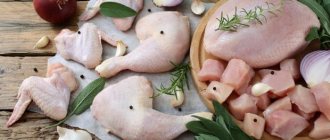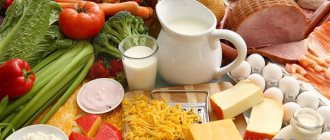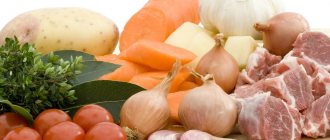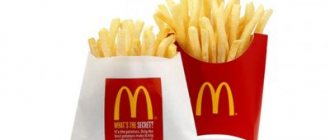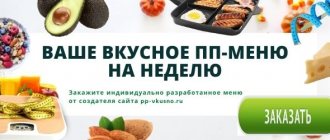With the arrival of cold weather, it is no coincidence that we are drawn to cinnamon rolls and spicy pumpkin soup. It turns out that spices can make winter much more pleasant.
Spices and seasonings are not taken seriously in our part of the world.
Is some fragrant dust on the tip of a knife capable of making us healthier and happier? But in the Middle East and Asia, spices have long been revered as medicine and are seriously prescribed along with medicines. This could be considered a funny cultural fact if not for the results of modern scientific research. Laboratory observations show that the usual spice powders are not just a tasty food additive, but also an effective way to influence the functioning of the body and a person’s well-being. It is known, for example, that the aromatic compounds in cinnamon can activate areas of the brain responsible for cognitive abilities and memory. This is probably why we remember good days with buns and cocoa for the rest of our lives (unlike important phone numbers). Another example is ginger: this root, among other skills, quickly copes with nausea of any nature. Thanks to scientists, turmeric has become a real superstar of the spice world in recent years. The curcumin molecule in its composition actively fights inflammation and even cancer cells in laboratory conditions.
This all sounds great, but in fact, the authors of scientific papers themselves urge us to treat sensations with healthy skepticism. Situations simulated in laboratories are far from the same as the behavior of a product in a real human body with its individual characteristics. So far, scientists only understand that herbs and spices have medical potential and the possible benefits can be enormous. But it is also clear that a cancer cure based on turmeric or ginger will not appear in pharmacies tomorrow, and perhaps never will appear. Nevertheless, science recommends using spices every day, especially in the cold season, for everyone who has no contraindications or diagnoses incompatible with hot, spicy and aromatic additives. Here are just a few reasons to have a spice rack in your kitchen.
More benefits from regular food
The vast majority of roots and powders used in cooking are plants grown in the tropics and highlands. Life in a harsh climate would be impossible for them without reliable protection. Most often it is caused by rich yellow, red, green and brown antioxidant pigments. They make plants resistant to adversity such as the scorching sun, pests, and temperature changes. In the human body, these chemicals are also able to restore order: bind free radicals, improve blood circulation and metabolism, and stimulate detoxification. In addition, exotic and Mediterranean spices do not contain the same phytonutrients as the vegetables and fruits traditional to our region. And food variety is one of the pillars of proper nutrition, especially in winter, when the choice of fresh foods is limited.
Another great bonus of using spices is that their rich flavor and aroma allow you to cook with less or no salt. For residents of large cities, this is vital: according to WHO estimates, the average citizen eats almost twice as much sodium chlorine as is needed for health. For which he quickly pays with a tendency to edema, problems with the heart and blood vessels, joint diseases, etc.
Use the rainbow principle with your seasonings throughout the day. The more colorful your menu is, including through spices, the more beneficial nutrients will enter the body.
Calories
The calorie content, or energy value, of food is, relatively speaking, the amount of energy that the body will receive after digesting and assimilating these products. This value is expressed in calories - traditional units of energy, for many people more familiar than the joules of the modern SI system. The amount of energy in calories (or joules) refers to 100 g of product. And since such an amount of nutrients contains a lot of calories, the energy value of the product is expressed in kilocalories (kcal). Moreover, 1 kcal = 4.1868 kJ. For example, 100 g of green peas contain approximately 55 kilocalories (230 kJ), 100 g of bananas - 91 kcal (381 kJ), 100 g of lard - 816 kcal (3416 kJ), and bull calves in tomato sauce - 145 kcal (607 kJ) .
Higher mood and energy levels
The lack of sunlight affects literally all systems of the body. But thanks to spices grown under the bright sun of the tropics, you can live through the winter with a smile on your lips and a charged battery. The main thing in our good mood is chili pepper and other hot varieties. The active substance capsaicin promotes the synthesis of joy hormones endorphins, which means it reduces the risk of seasonal blues.
Almost all spices are characterized by the ability to speed up metabolic processes and tone the body. Of course, it would be naive to expect an energy boost from one serving of Indian curry, but regular use of spices is associated with better metabolism of fats and carbohydrates and overall vigor.
The ability to relieve anxiety and calm, which is also important in winter, is also attributed to cinnamon. It is no coincidence that the smell of apple pie with this spice has become a symbol of home comfort and is replicated in millions of scented candles every year. But most of all, scientists believe in color therapy. Seasonings of the red-yellow spectrum can have a beneficial effect on the brain, exhausted by the grayness outside the window, so cooking rice with a pinch of bright spices is a good winter idea for many reasons.
Contrary to the stereotype, cinnamon is good for more than just pies and cappuccino. Marinade for meat and poultry will only benefit if you add spice to it. For example, according to the scheme “salt, pepper, olive oil, cinnamon, cloves, nutmeg.”
What determines the nutritional value of fats?
The nutritional value of different fats is not the same and largely depends on the digestibility of fat by the body. The digestibility of fat, in turn, depends on its melting temperature. Thus, fats with a low melting point, not exceeding 37o... Fats with a high melting point are absorbed much worse.
Interesting materials:
How to bleach yellow stains from sneakers? How to whiten sneakers with soda? How to bleach a cap? How to whiten a ceramic bath? How to bleach a robe with aspirin? How to bleach a robe with citric acid? How to bleach a medical gown from yellowness? How to bleach cotton fabric at home? How to bleach cotton? How to bleach cotton linen?
Microbes won't be happy
By the standards of history, spices have only recently become a gourmet ingredient. Initially, they were widely used to veil products of dubious quality and for preservation. The first was dealt with well by volatile aromatic substances, which could overpower many other odors, while the second was dealt with by antibacterial agents in the composition of spices. Cloves, ginger, turmeric, garlic and rosemary top the list of spices that are harmful to pathogens and therefore beneficial for people during the cold season. Of course, ginger tea after this does not become a cure for pneumonia, but it is quite a means of prevention and support of the immune system.
The antioxidants and beneficial substances of most spices are better absorbed with fat. Surprisingly, people intuitively understood this even before the era of mass scientific research: in many gastronomic cultures, spices are usually fried in oil or taken with fatty foods. Fortunately, extra calories should not disrupt your slim figure: the active substances in spices usually stimulate blood flow and, therefore, the metabolic rate.
Appetite and weight under control
Let's talk about cinnamon rolls again. According to research, the essential oils in the spice help regulate blood sugar levels and prevent sudden spikes. So, in theory, baking with cinnamon is almost not a crime against your figure, but a healthy compromise.
But seriously, spices can actually be good for keeping fit. During the cold season, we traditionally eat more “comfortable”, well-satisfying foods. But meat, thick soups, nuts, starchy vegetables and all kinds of pies are relatively difficult foods to digest. Spices can make it easier to digest. Rosemary, chili, turmeric, and paprika are traditionally used for marinating meat and preparing multi-ingredient dishes precisely because they soften proteins and help digest foods of different natures. And quality digestion is already half the battle in the fight for harmony.
No matter how useful seasonings are, the principle of moderation in use is not fraught with problems with the digestive, nervous and cardiovascular systems.
Energy value of food (all figures per 100 g of product)
Vegetables and greens
| Product name | kcal | fats | squirrels | carbohydrates |
| Avocado | 223 | 23,5 | 1,9 | 6,7 |
| Eggplant | 24 | 0,1 | 0,6 | 5,5 |
| Zucchini | 27 | 0,3 | 0,6 | 5,7 |
| Potato | 83 | 0,1 | 2 | 19,7 |
| Brussels sprouts | 12 | 0 | 1,2 | 1,7 |
| Cauliflower | 29 | 0 | 2,5 | 4,9 |
| White cabbage | 28 | 0 | 1,8 | 5,4 |
| Sauerkraut | 17 | 2,3 | 5,8 | 0 |
| Kohlrabi | 30 | 0 | 1,8 | 5,4 |
| Bulb onions | 43 | 0 | 1,7 | 9,5 |
| Bow feather | 22 | 0 | 1,3 | 4,3 |
| Leek | 40 | 0 | 3 | 7,3 |
| Carrot | 33 | 0,1 | 1,3 | 7 |
| Greenhouse cucumbers | 10 | 0 | 0,7 | 1,8 |
| Ground cucumbers | 15 | 0 | 0,8 | 3 |
| Olives | 538 | 51 | 5,2 | 10 |
| Sweet pepper (red) | 27 | 0 | 1,3 | 5,7 |
| Parsley | 45 | 0 | 3,7 | 8,1 |
| Radish | 20 | 0 | 1,2 | 4,1 |
| Radish | 34 | 0 | 1,9 | 7 |
| Turnip | 28 | 0 | 1,5 | 5,9 |
| Celery | 22 | 0 | 6,9 | 4,5 |
| Beetroot | 48 | 0 | 1,7 | 10,8 |
| Leaf lettuce | 14 | 0 | 1,5 | 2,2 |
| Greenhouse tomatoes | 14 | 0 | 0,6 | 2,9 |
| Ground tomatoes | 19 | 0 | 0,6 | 4,2 |
| Table pumpkin | 19 | 0 | 0,3 | 4,4 |
| Horseradish (root) | 71 | 0 | 2,5 | 16,3 |
| Dill | 30 | 0 | 1,8 | 5,6 |
| Garlic | 106 | 0 | 6,5 | 21,2 |
| Green beans (pod) | 32 | 0 | 4 | 4,3 |
| Spinach | 21 | 0 | 2,9 | 2,3 |
| Sorrel | 28 | 0 | 1,5 | 5,3 |
Fruits
| Product name | kcal | fats | squirrels | carbohydrates |
| Orange | 38 | 0 | 0,9 | 8,4 |
| Apricot | 46 | 0 | 0,9 | 10,5 |
| A pineapple | 48 | 0 | 0,4 | 11,8 |
| Watermelon | 38 | 0 | 1 | 22,4 |
| Banana | 91 | 0 | 1,5 | 22,4 |
| Cherry | 49 | 0 | 0,8 | 11,3 |
| Grape | 69 | 0 | 0,4 | 17,5 |
| Pear | 42 | 0 | 0,4 | 10,7 |
| Melon | 25 | 0 | 0,4 | 4,5 |
| Figs | 56 | 0 | 0,7 | 13,9 |
| Cranberry | 28 | 0 | 0,5 | 4,8 |
| Lemon | 31 | 0 | 0,9 | 3,6 |
| Garden strawberry (strawberry) | 37 | 0 | 1,2 | 8 |
| Currant (black) | 40 | 0 | 1 | 8 |
| Garden plum | 43 | 0 | 0,8 | 9,9 |
| Apples | 46 | 0 | 0,4 | 11,3 |
Dried fruits and nuts
| Product name | kcal | fats | squirrels | carbohydrates |
| Apricot without pit (dried apricot) | 272 | 0 | 5,2 | 65,9 |
| Raisins sultanas | 279 | 0 | 2,3 | 71,2 |
| Pitted plum (prune) | 264 | 0 | 2,3 | 65,6 |
| Rose hip | 253 | 0 | 4 | 60 |
| Dates | 281 | 0 | 2,5 | 72,1 |
| Peanut | 548 | 45,2 | 26,3 | 9,7 |
| Walnuts | 648 | 61,3 | 13,8 | 10,2 |
| Cedar | 270 | 23,2 | 6,9 | 6,2 |
| Forest (hazel, hazelnut) | 704 | 66,9 | 16,1 | 9,9 |
| Almond | 645 | 57,7 | 18,6 | 13,6 |
| Sunflower seeds | 578 | 52,9 | 20,7 | 5 |
| Pistachios | 318 | 27,5 | 9,3 | 6 |
Cereals and legumes
| Product name | kcal | fats | squirrels | carbohydrates |
| Hercules | 355 | 6,2 | 13,1 | 65,7 |
| Buckwheat (kernel) | 329 | 2,6 | 12,6 | 68 |
| Corn | 325 | 1,2 | 8,3 | 75 |
| Manna | 326 | 0,7 | 11,3 | 73,3 |
| Pasta | 356 | 0,9 | 11 | 74,2 |
| Millet | 334 | 2,9 | 12 | 69,3 |
| Wheat | 325 | 1,1 | 12,7 | 70,6 |
| Pearl barley | 324 | 1,1 | 9,3 | 73,7 |
| Rice | 323 | 0,6 | 7 | 73,7 |
| Barley | 322 | 1,3 | 10,4 | 71,7 |
| Beans | 58 | 0,1 | 6 | 8,3 |
| Soybeans | 395 | 17,3 | 34,9 | 26,5 |
| Whole peas | 303 | 1,2 | 23 | 53,3 |
| Shelling peas (canned green peas) | 323 | 1,6 | 23 | 57,7 |
| Lentils | 310 | 1,1 | 24,8 | 53,7 |
| Beans | 309 | 1,7 | 22,3 | 54,5 |
Dairy products
| Product name | kcal | fats | squirrels | carbohydrates |
| Cheese cheese (from cow's milk) | 260 | 20,1 | 17,9 | 0 |
| Yogurt (1.5% fat) | 51 | 1,5 | 5 | 3,5 |
| Full fat kefir | 59 | 3,2 | 2,8 | 4,1 |
| Low-fat kefir | 30 | 0,1 | 3 | 3,8 |
| Acidophilus milk | 83 | 3,2 | 2,8 | 10,8 |
| Homemade milk | 58 | 3,2 | 2,8 | 4,7 |
| Powdered milk | 475 | 25 | 25,6 | 39,4 |
| Condensed milk with sugar | 315 | 8,5 | 7,2 | 56 |
| Ryazhenka | 85 | 6 | 3 | 4,1 |
| Sour cream (fat content 20%) | 206 | 20 | 2,8 | 3,2 |
| Sour cream (fat content 10%) | 116 | 10 | 3 | 2,9 |
| Cream (fat content 20%) | 205 | 20 | 2,8 | 3,6 |
| Cream (fat content 10%) | 118 | 10 | 3 | 4 |
| Cheeses and curd masses | 340 | 23 | 7,1 | 27,5 |
| Processed cheeses | 226 | 13,5 | 24 | 0 |
| Dutch cheese | 361 | 27,3 | 26,8 | 0 |
| Poshekhonsky cheese | 334 | 26,5 | 26 | 0 |
| Russian cheese | 371 | 30 | 23,4 | 0 |
| Swiss cheese | 396 | 31,8 | 24,9 | 0 |
| Low-fat cottage cheese | 86 | 0,6 | 18 | 1,5 |
| Fat cottage cheese | 226 | 18 | 14 | 1,3 |
Oils, lard, etc.
| Product name | kcal | fats | squirrels | carbohydrates |
| Butter | 748 | 82,5 | 0,6 | 0,9 |
| Vegetable oil | 899 | 99,9 | 0 | 0 |
| Ghee | 887 | 98 | 0,3 | 0,6 |
| Creamy margarine | 744 | 82 | 0,5 | 1,2 |
| Mayonnaise | 627 | 67 | 3,1 | 2,6 |
| Pork bacon | 816 | 92,8 | 1,4 | 0 |
Meat, poultry, offal and sausages
| Product name | kcal | fats | squirrels | carbohydrates |
| Mutton | 203 | 15,3 | 16,3 | 0 |
| Beef | 187 | 12,4 | 18,9 | 0 |
| Beef udder | 173 | 13,7 | 12,3 | 0 |
| Beef kidneys | 66 | 1,8 | 12,5 | 0 |
| Beef liver | 98 | 3,1 | 17,4 | 0 |
| Beef heart | 87 | 3 | 15 | 0 |
| Beef tongue | 163 | 12,1 | 13,6 | 0 |
| Goose | 364 | 33,3 | 16,1 | 0 |
| Turkey | 197 | 12 | 21,6 | 0,8 |
| horsemeat | 143 | 7 | 20,2 | 0 |
| Rabbit | 199 | 12,9 | 20,7 | 0 |
| Chickens | 165 | 8,8 | 20,8 | 0,6 |
| Pork is fatty | 489 | 49,3 | 11,4 | 0 |
| Pork lean | 316 | 27,8 | 16,4 | 0 |
| Pork liver | 108 | 3,6 | 18,8 | 0 |
| Pork kidneys | 80 | 3,1 | 13 | 0 |
| Pig heart | 89 | 3,2 | 15,1 | 0 |
| Pig tongue | 208 | 16,8 | 14,2 | 0 |
| Veal | 90 | 1,2 | 19,7 | 0 |
| Duck | 346 | 61,2 | 16,5 | 0 |
| Boiled sausage Doctorskaya | 360 | 22,8 | 13,7 | 0 |
| Boiled sausage Lyubitelskaya | 301 | 28 | 12,2 | 0 |
| Boiled-smoked Cervelat | 360 | 27,5 | 28,2 | 0 |
| Boiled-smoked Amateur | 420 | 39 | 17,3 | 0 |
| Ham | 279 | 20,9 | 22,6 | 0 |
| Beef stew | 232 | 18,3 | 16,8 | 0 |
| Raw smoked brisket | 467 | 47,2 | 10,5 | 0 |
| Semi-smoked Ukrainian | 376 | 34,4 | 16,5 | 0 |
| Semi-smoked Minsk | 259 | 17,4 | 23 | 2,7 |
| Semi-smoked Krakow | 466 | 44,6 | 16,2 | 0 |
| Pork sausages | 332 | 31,6 | 10,1 | 1,9 |
| Pork stew | 349 | 32,2 | 14,9 | 0 |
| Pork sausages | 324 | 30,8 | 11,8 | 0 |
| Milk sausages | 277 | 25,3 | 12,3 | 0 |
| Russian sausages | 220 | 19,1 | 12 | 0 |
| Raw smoked Moscow | 473 | 41,5 | 24,8 | 0 |
| Raw smoked Amateur | 514 | 47,8 | 20,9 | 0 |
Eggs
| Product name | kcal | fats | squirrels | carbohydrates |
| Chicken egg | 157 | 11,5 | 12,7 | 0,7 |
| Quail egg | 168 | 13,1 | 11,9 | 0,6 |
| Egg powder | 542 | 37,3 | 45 | 7,1 |
Fish and seafood
| Product name | kcal | fats | squirrels | carbohydrates |
| Pink salmon | 147 | 7 | 21 | 0 |
| Sturgeon caviar punched | 123 | 10,2 | 36 | 0 |
| Sturgeon caviar granular | 203 | 9,7 | 28,9 | 0 |
| Chum salmon caviar granular | 251 | 13,8 | 31,6 | 0 |
| Pollock caviar, punched | 131 | 1,9 | 28,4 | 0 |
| Squid | 75 | 0,3 | 18 | 0 |
| Flounder | 88 | 2,6 | 16,1 | 0 |
| Carp | 96 | 3,6 | 16 | 0 |
| Smelt | 91 | 3,2 | 15,5 | 0 |
| Shrimp | 83 | 0,8 | 18 | 0 |
| Far Eastern shrimp | 134 | 1,2 | 28,7 | 0 |
| Crab | 69 | 0,5 | 16 | 0 |
| Bream | 105 | 4,1 | 17,1 | 0 |
| Pollock | 70 | 0,7 | 15,9 | 0 |
| Sea kale | 5 | 0,2 | 0,9 | 3 |
| capelin | 157 | 11,5 | 13,4 | 0 |
| Navaga | 73 | 1 | 16,1 | 0 |
| Marbled notothenia | 156 | 10,7 | 14,8 | 0 |
| Sturgeon | 164 | 10,9 | 16,4 | 0 |
| River perch | 82 | 0,9 | 18,5 | 0 |
| Sea bass | 117 | 5,2 | 17,6 | 0 |
| Blue whiting | 72 | 0,9 | 16,1 | 0 |
| Halibut | 103 | 3 | 18,9 | 0 |
| Carp | 121 | 5,3 | 18,4 | 0 |
| Salaka | 121 | 5,6 | 17,3 | 0 |
| Small saury | 143 | 0,8 | 20,4 | 0 |
| Large saury | 262 | 20,8 | 18,6 | 0 |
| Salmon | 219 | 15,1 | 20,8 | 0 |
| Herring | 242 | 19,5 | 17,7 | 0 |
| Mackerel | 153 | 9 | 18 | 0 |
| Som | 144 | 8,5 | 16,8 | 0 |
| Sterlet | 320 | 6,1 | 17 | 0 |
| Horse mackerel | 119 | 5 | 18,5 | 0 |
| Zander | 83 | 0,8 | 19 | 0 |
| Tuna | 96 | 0,7 | 22,7 | 0 |
| Cod | 75 | 0,6 | 17,5 | 0 |
| Cod (liver) | 613 | 65,7 | 4,2 | 0 |
| Acne | 333 | 30,5 | 14,5 | 0 |
| Sea eel | 94 | 1,9 | 19,1 | 0 |
| Pike | 82 | 0,7 | 18,8 | 0 |
| Hake | 86 | 2,2 | 16,6 | 0 |
| Ide | 117 | 0,3 | 18,2 | 0 |
Bakery products
| Product name | kcal | fats | squirrels | carbohydrates |
| Baranki | 312 | 1,3 | 10,7 | 68,7 |
| Corn flour | 351 | 1,7 | 9,6 | 22,1 |
| Rye flour | 326 | 1,1 | 6,9 | 76,9 |
| Premium wheat flour | 327 | 0,9 | 10,3 | 74,2 |
| Butter products | 297 | 4,5 | 7,6 | 60 |
| Creamy crackers | 397 | 10,6 | 8,5 | 71,3 |
| Wheat crackers | 331 | 1,4 | 11,2 | 72,4 |
| Drying | 330 | 1,3 | 11 | 73 |
| Wheat bread | 254 | 2,4 | 7,7 | 53,4 |
| Rye bread | 214 | 0,7 | 4,7 | 49,8 |
